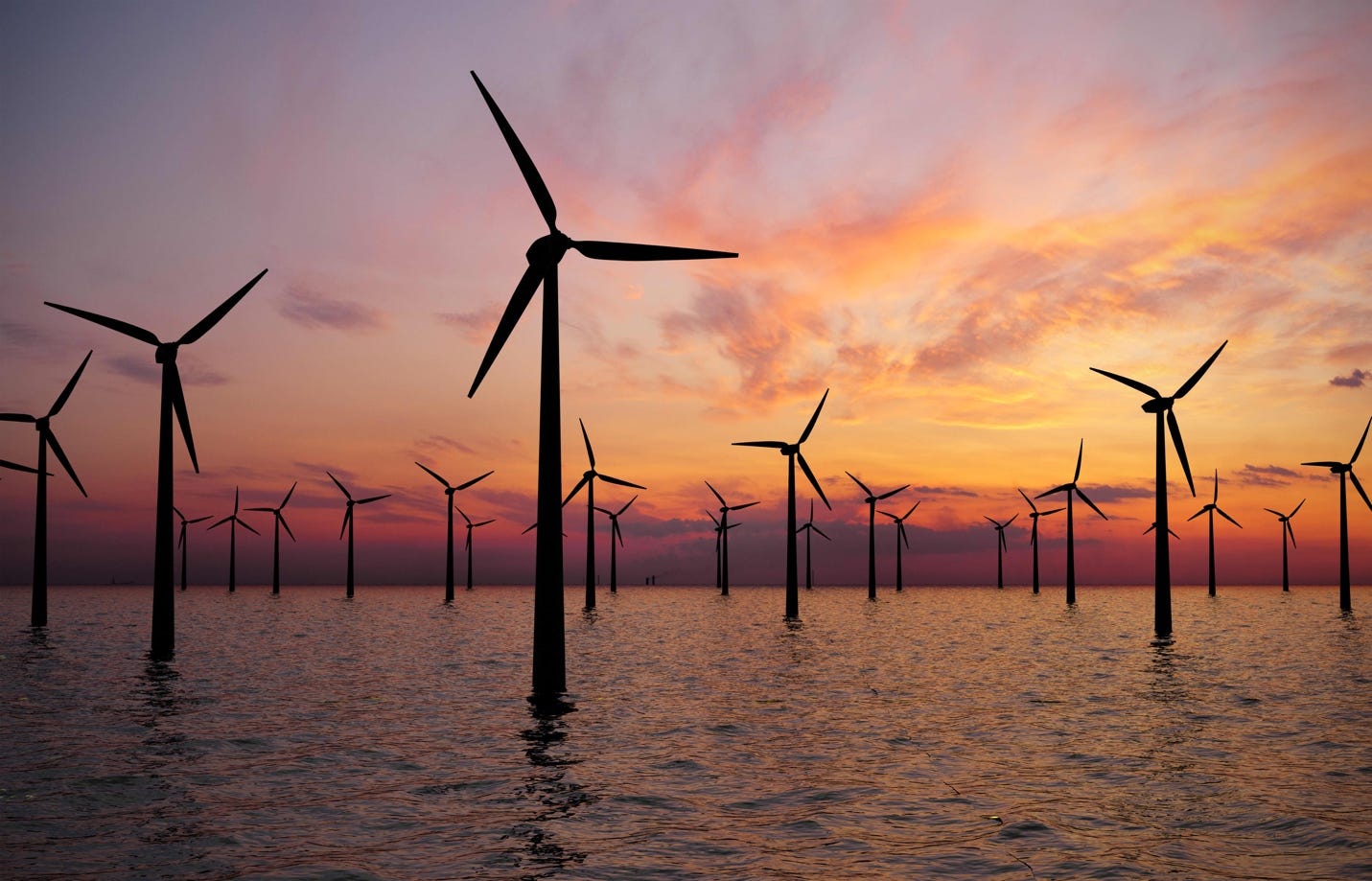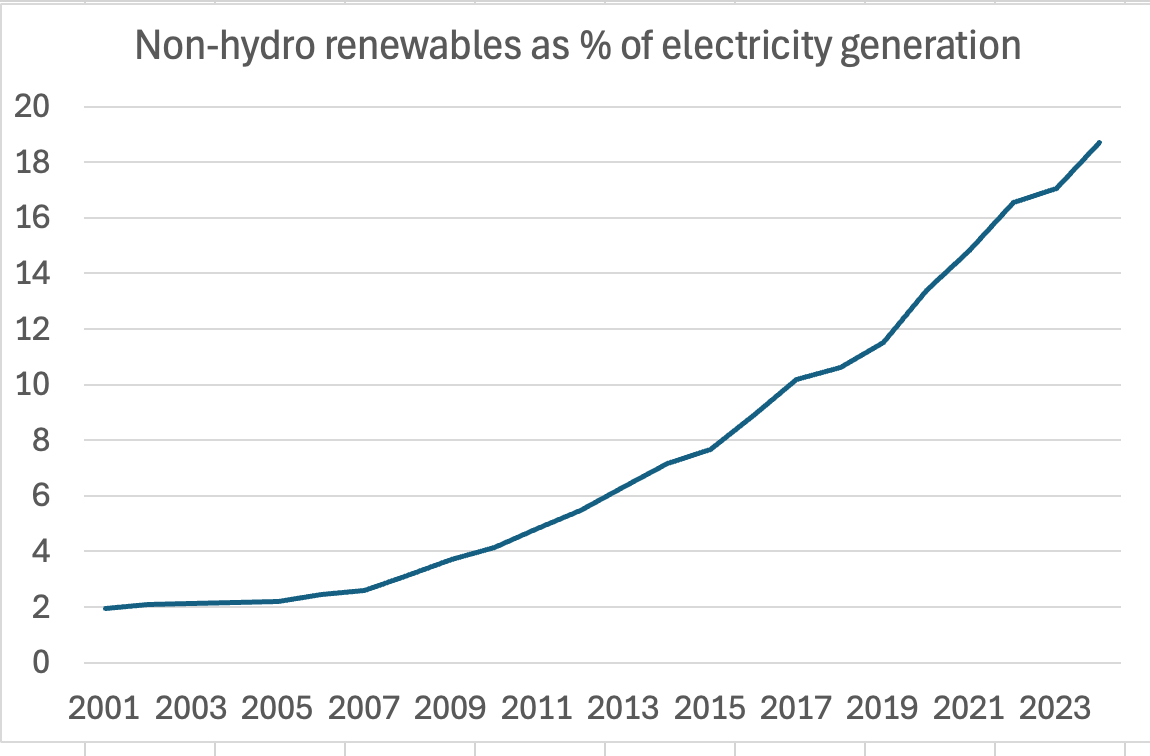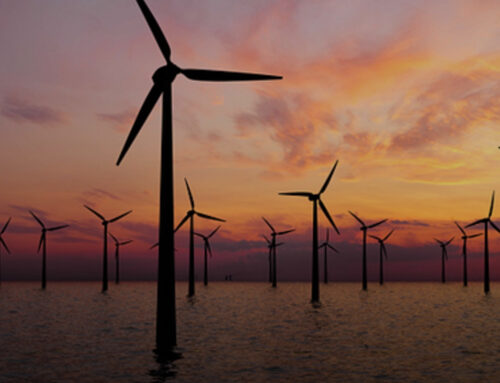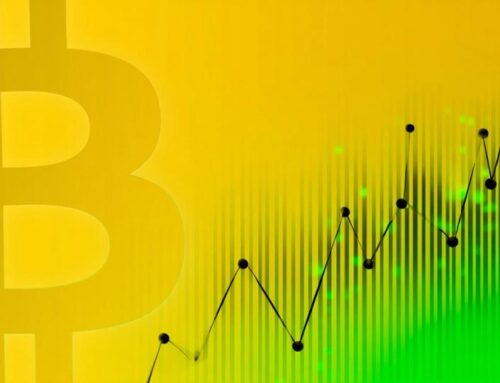The Rise of Renewable Energy
October 26, 2025
Anatomy of a technological miracle
Does anyone still remember the Cheney energy report? Early in the George W. Bush administration a task force led by Vice President Dick Cheney released a big report offering recommendations for energy policy. There was a lot of controversy at the time — you might even call it a scandal — over Cheney’s secretiveness, his refusal to reveal how much role corporate interests played in writing the report, whose conclusions might be summarized as “drill, baby, drill.”
Those were innocent days. These days we have much bigger scandals multiple times a week.
But politics aside, what’s notable about that 2001 report, put together by men who regarded themselves as hard-headed realists, is that it envisaged an energy future reliant almost entirely on fossil fuels plus a bit of nuclear energy. The report grudgingly admitted that technological progress had reduced the costs of renewable energy, but still saw solar and wind as trivial for our energy future:
By 2020, non-hydropower renewable energy is expected to account for 2.8 percent of total electricity generation.
Here’s what actually happened:
Today’s primer will be devoted to the rise of renewable energy. This is, of course, a deeply politicized subject: Donald Trump and his officials hate, just hate wind and solar power, and there are many people who still refuse to believe that renewables can be practical even as renewables keep growing around the world, in fact accounting for the bulk of growth in electricity generation. But I’ll leave detailed discussion of where those attitudes come from for the next primer.
For today I want, instead, to focus on the economics of renewable energy. How did energy sources that a generation ago were widely dismissed as hippie fantasies become a major source of electricity? What are these sources’ future prospects, and how will their growth be affected by policy?
Beyond the paywall I’ll address the following:
1. How much has renewable energy grown, and why?
2. Why did the cost of renewables fall so much, so fast?
3. What role has policy played in the rise of renewables?
Today’s primer is intended as the first part of a two-part series. Next week I’ll ask, among other things, why there’s still so much U.S. political opposition to green energy; whether that opposition can stall the energy transition in America, and how this will affect geopolitics as China races ahead. I’ll also need to talk about whether renewables are driving up electricity prices and how we will (or won’t) cope with the extraordinary energy demands of generative AI; and more.
But first, a short course in energy miracles.
Search
RECENT PRESS RELEASES
Related Post





